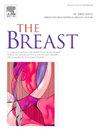High impact of chemotherapy on ovarian reserve in breast cancer survivors of reproductive age: A systematic review and meta-analysis
IF 7.9
2区 医学
Q1 OBSTETRICS & GYNECOLOGY
引用次数: 0
Abstract
Introduction
The risk of infertility following breast cancer (BC) treatment is critical for women of reproductive age. Accurate risk assessment is essential for fertility counseling and preservation. Amenorrhoea as an infertility marker is unreliable due to endocrine therapies. Anti-Mullerian hormone (AMH) is a reliable fertility marker, but its role in assessing chemotherapy-induced loss of ovarian reserve in BC survivors remains underexplored.
Objective
This systematic review and meta-analysis evaluates AMH decline and the prevalence of low (AMH <1 ng/mL) and very low (<0.5 ng/mL) ovarian reserve in BC survivors <40 years old, 12–24 months post-chemotherapy, to quantify the gonadotoxic impact of BC treatments.
Methods
A systematic literature search of PubMed, Embase, and the Cochrane Library identified studies with AMH levels before and 12–24 months after chemotherapy in BC patients <40 years of age. Data on AMH levels were pooled using random-effects meta-analysis. Study quality was assessed using the Joanna Briggs Institute Critical Appraisal Checklist. This study is part of the FertiTOX project (www.fertitox.com).
Results
Ten studies (860 BC survivors) were included. Mean AMH decline was −1.61 (95 % CI: -2.31; −0.91) post-chemotherapy. The pooled prevalence of AMH <1 ng/mL and <0.5 ng/mL was 58 % (46–70 %) and 53 % (41–64 %), respectively. High heterogeneity was observed (I2 >80 %).
Conclusions
More than half of BC survivors have severely reduced ovarian reserve after chemotherapy, which is associated with a shortened fertile window and an increased risk of premature ovarian insufficiency. These findings highlight the need for pre-treatment fertility counseling and post-treatment ovarian insufficiency surveillance in routine oncology care.
化疗对育龄乳腺癌幸存者卵巢储备的高影响:系统回顾和荟萃分析
乳腺癌(BC)治疗后不孕的风险对育龄妇女至关重要。准确的风险评估对生育咨询和保存至关重要。闭经作为不孕症的标志由于内分泌治疗是不可靠的。抗苗勒管激素(AMH)是一个可靠的生育指标,但其在评估化疗引起的BC幸存者卵巢储备丧失中的作用仍未得到充分研究。目的:本系统综述和荟萃分析评估40岁、化疗后12-24个月的BC幸存者AMH下降和低(AMH <1 ng/mL)和极低(<0.5 ng/mL)卵巢储备的患病率,以量化BC治疗的促性腺毒素影响。方法系统检索PubMed、Embase和Cochrane图书馆的文献,确定40岁BC患者化疗前和化疗后12-24个月AMH水平的研究。AMH水平的数据采用随机效应荟萃分析。使用乔安娜布里格斯研究所关键评估清单评估研究质量。该研究是FertiTOX项目(www.fertitox.com)的一部分。结果纳入了10项研究(公元前860年幸存者)。平均AMH下降为- 1.61 (95% CI: -2.31;−0.91)化疗后。1 ng/mL和0.5 ng/mL AMH的总患病率分别为58%(46 - 70%)和53%(41 - 64%)。观察到高度异质性(I2 > 80%)。结论超过一半的BC幸存者化疗后卵巢储备严重减少,这与生育窗口缩短和卵巢早衰的风险增加有关。这些发现强调了在常规肿瘤治疗中进行治疗前生育咨询和治疗后卵巢功能不全监测的必要性。
本文章由计算机程序翻译,如有差异,请以英文原文为准。
求助全文
约1分钟内获得全文
求助全文
来源期刊

Breast
医学-妇产科学
CiteScore
8.70
自引率
2.60%
发文量
165
审稿时长
59 days
期刊介绍:
The Breast is an international, multidisciplinary journal for researchers and clinicians, which focuses on translational and clinical research for the advancement of breast cancer prevention, diagnosis and treatment of all stages.
 求助内容:
求助内容: 应助结果提醒方式:
应助结果提醒方式:


